Uneasy Combinations
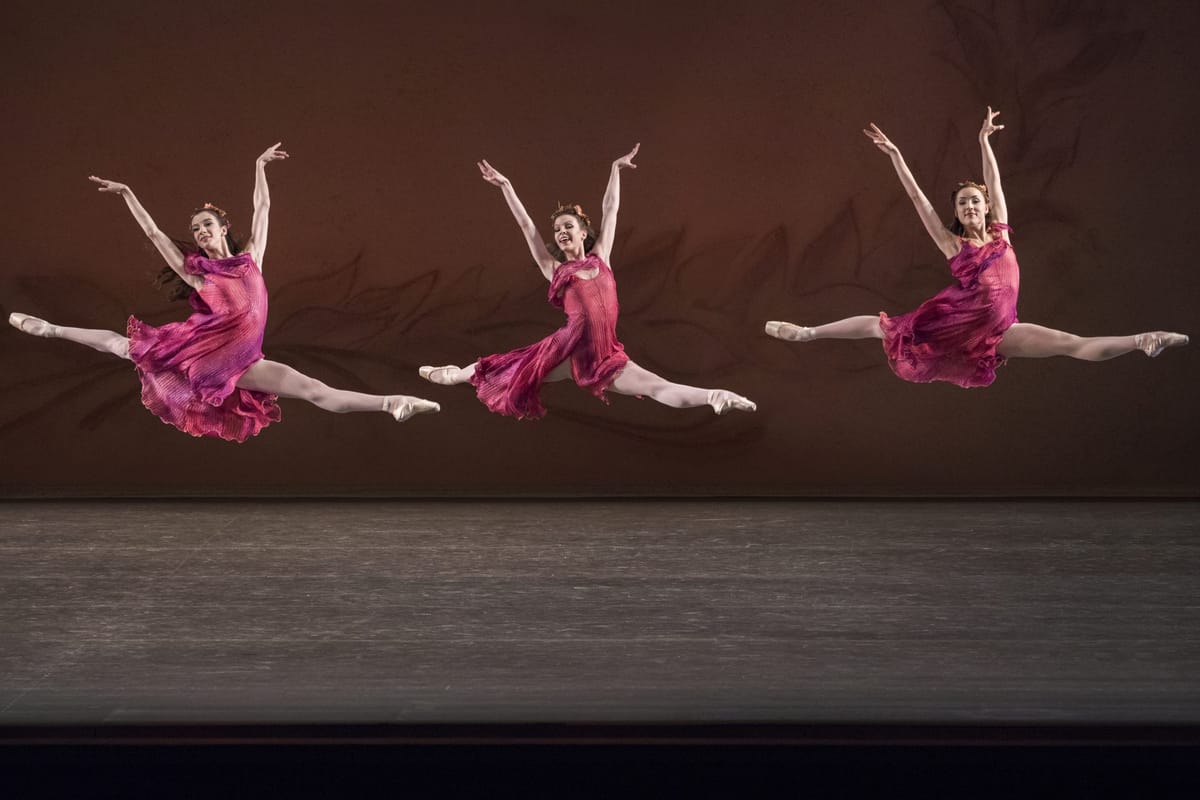
"Divertimento from 'Le Basier de la Fée'", "Each in His Own Time", "This Bitter Earth", "The Four Seasons"
New York City Ballet
David H. Koch Theater
Lincoln Center
New York, New York
September 21, 2024
This somewhat oddly constructed program opened with a jolt: the astringent and fundamentally pessimistic “Divertimento from ‘Le Baiser de la Fée”, Balanchine’s abstraction of Hans Christian Andersen’s harrowing story “The Ice Maiden” is a rather heavy opening work. Two sentimental pas de deux followed after the intermission, one for two men by Lar Lubovitch and one for a couple by Christopher Wheeldon, popular but rather lightweight after the solemn ending of the first ballet. The final ballet, Jerome Robbins’ “The Four Seasons”, an infectious romp through some familiar Russian ballet cliches, though, was a perfect ending.
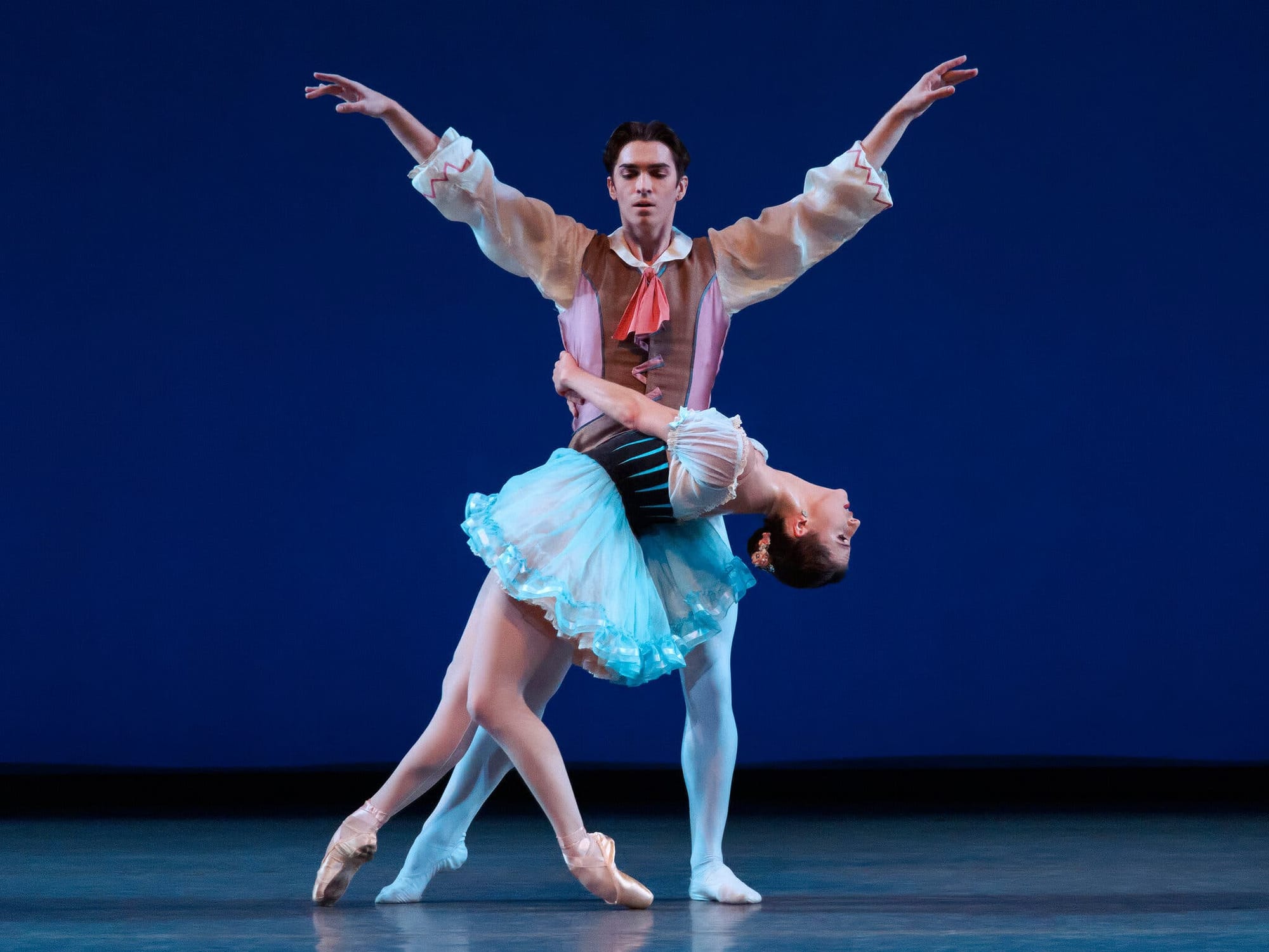
Indiana Woodward and David Gabriel debuted as the doomed couple in “Divertimento from ‘Le Baiser de la Fee’”. The work, to music by Stravinsky based on themes by Tchaikovsky, opened in what seemed to be a happy peasant land, with a frisky female corps, led by two dancers (an incisive Alston Macgill in her debut and a sweeping Mary Elizabeth Sell). Woodward’s creamy upper body, elegant footwork and sunny presence illuminated her piquant solo, where she may represent the frolicking peasant girlfriend of the ill-fated man. (In Andersen’s story, he is claimed by the ice maiden who killed his mother when he was a baby; at the end of the story, she returns on the night before his wedding to kiss him and he dies; in the original ballet libretto he abandons his village life to follow his muse—either way the poor girl loses.) But even in the opening sections of Balanchine’s abstraction, there are disturbing hints as she and Gabriel rarely connect, often looking in different directions.
These hints became more obvious during Gabriel’s restless, indecisive solo, with so many changes of direction. Gabriel gave his dancing a distinctive individuality, with an elegant line and a puzzled, almost helpless air. The helped make the abrupt change of mood, as the corps rushed in to separate the couple, pulling them off in opposite directions, seem so inevitable; the two dancers, with their solemn commitment, gave the simple ending, as they backed off to opposite sides of the stage, reaching out to each other to Stravinsky’s swelling, ominous music, a hushed inevitability. It was a very moving performance.
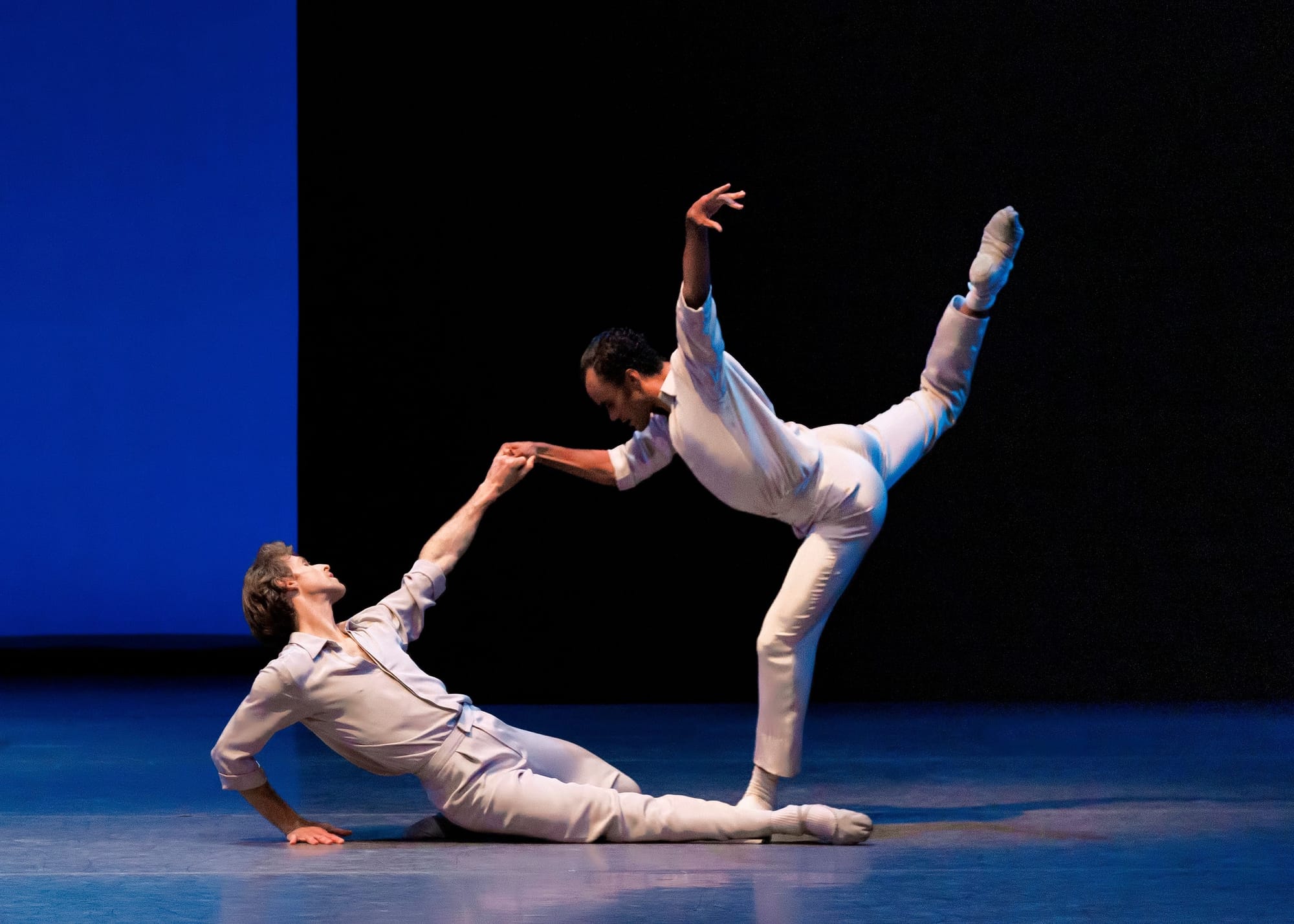
Lubovitch’s “Each in his Own Time”, set to Brahms’ “Eight Piano Pieces”, was originally choreographed in 2021 for the Fall for Dance festival, and had few surprises; there was a piano on stage and a dark setting with the two dancers (Adrian Danchig-Waring and Taylor Stanley) standing in separate pools of light looking moody in anyone-for-tennis whites. After listening to the pianist (Susan Walters) for a while, they started practicing their arabesques while the music fluttered on in the background; the movement seemed to have little connection to the music. The two dancers performed beautifully, Danchig-Waring with a weighty dignity and Stanley with a hypnotic flow, and there were some intriguing shapes and poses but the piece as a whole meandered pleasantly along with little variety or contrast.
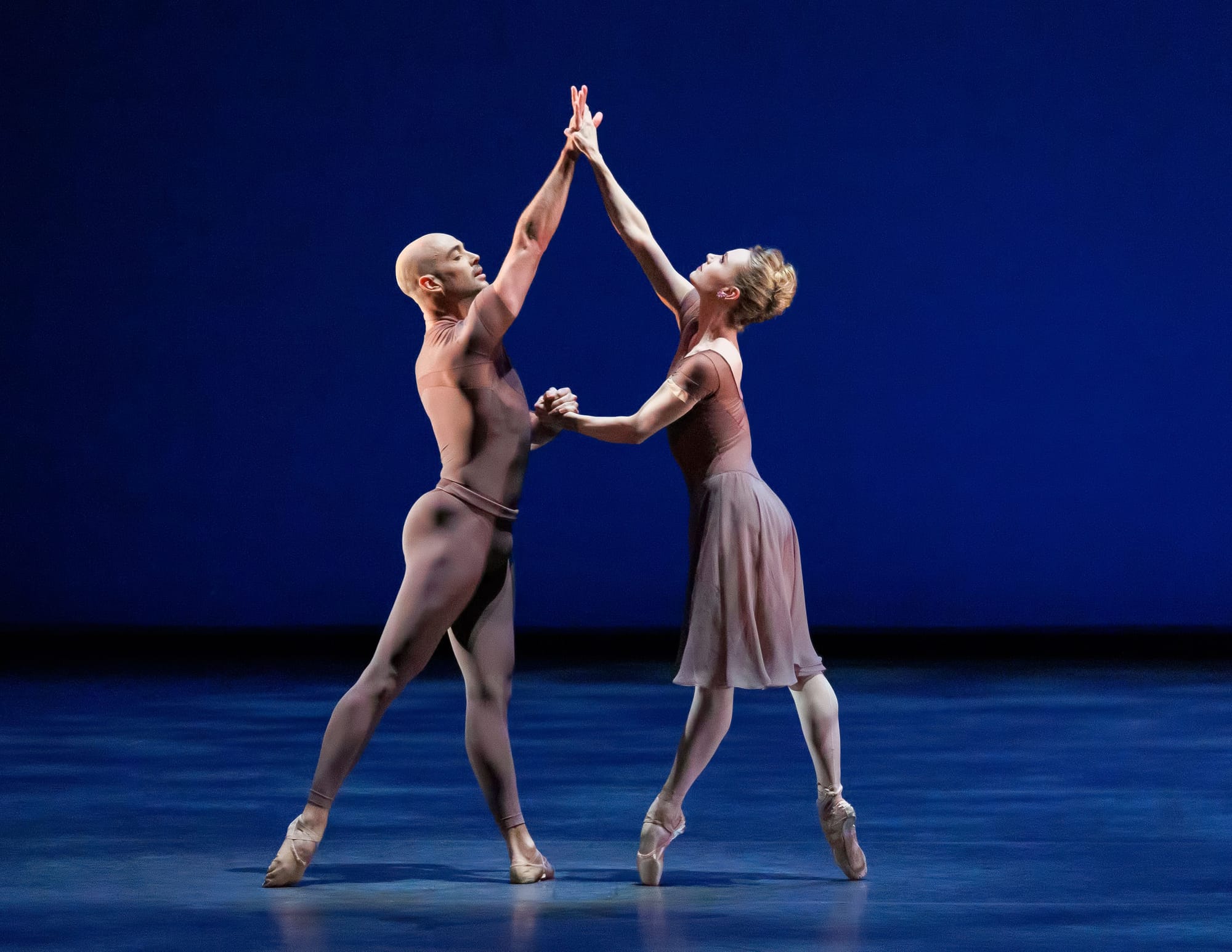
Wheeldon’s “This Bitter Earth” was also made for a festival, and premiered at the Vail International Dance Festival in 2012. It is a breathy vehicle for a dramatic dancer, danced in this performance by Sara Mearns with Tyler Angle. Mearns, wearing an extremely flattering costume of brown chiffon (by Reid Bartelme) looked as majestic as a prow of a ship as she swooped (and swooped and swooped) unobtrusively partnered by the dignified and generous Angle. But choreographically it is a bit slight, surface emotion and little content, though that costume is beautiful.
There are plenty of beautiful costumes (by Santo Loquasto) in “The Four Seasons”. Not only do the dancers prance around in beautiful colors, the Seasons (impersonated by some of NYCB's most imposing and stately dancers) get to sweep on in gorgeous capes and elegant heeled shoes. The stage picture alone got a round of applause. The Verdi music, taken mostly from “I Vespri Siciliani” is irresistibly danceable, which is not surprising since the selections were originally written for the traditional third act ballets so beloved by 19th century opera goers.
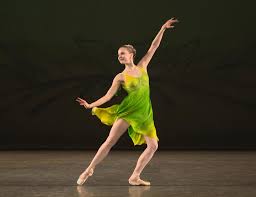
Erica Pereira led Winter, who when the rather silly shivers and shoves got out of the way, danced her solo with brisk, fleet footwork. Olivia MacKinnon, with Chun Wai Chan, danced Spring. In her first performances in early 2024 MacKinnon seemed to be concentrating on finishing her turns; she did nail them, though her dancing seemed more about steps than atmosphere. She now had atmosphere to burn, almost tiptoeing in like a light breeze, then banishing winter with a flourish of turns and quick changes of direction. It was a beautifully developed and exciting performance.
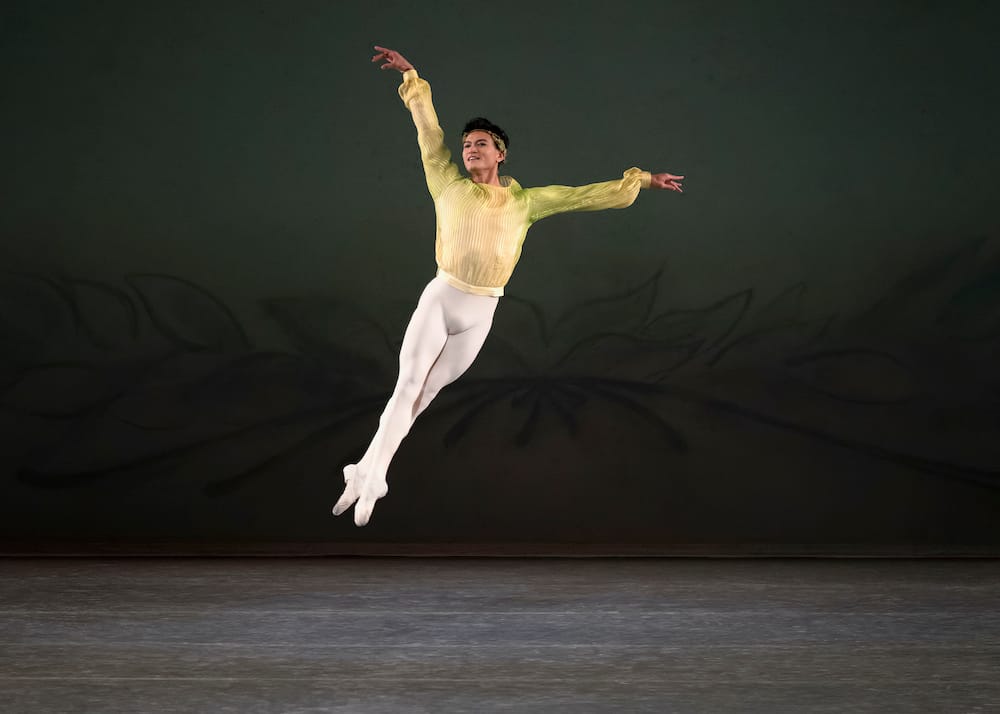
Chun Wai Chan, her companion, danced with his usual elegant ease. His jumps may not be spectacularly high, but his apparent lack of preparation make his jumps appear effortless, as if he could float on air, and he flew through his bouncy, juicy solo. And so did the four men (Christopher Grant, Kennard Hanson, Spartak Hoxha, and Jules Mabie”, who looked like a group of frogs who had decided to dance the pas de quatre from “Raymonda”.
The sultry Orientalism of Summer was burnished to a golden sheen by Ashley Laracey and Davide Riccardo (his debut). Laracey’s long, flowing arms and her air of mystery gave the piece a wonderfully exotic touch. Riccardo, on of the most promising of NYCB’s younger dancers, snaked through the undulations, which his generous focus on his partner kept just this side of camp.
There is no hiding the camp of the Fall bacchanal, as the dancers poured on as if they were auditioning for the Soviet version of “Walpurgisnacht”. KJ Takahashi as the faun/master of ceremonies had an irresistible springy control to his dancing, taking charge and marshaling his troops. Unity Phelan looked absolutely gorgeous in her elaborate headdress, and kicked the back of her head with ease. But her dancing was a bit too gracious, and I missed the soupçon of vulgarity, that little tongue in cheek wink to the audience, that lets them know it’s all in fun.
Andrew Veyette, her partner, understood that very well, and, costumed like a refugee from “Spartacus”, he did his best to flex his muscles. His turns a la seconde were reasonably secure, though his jumps were labored and heavy. His flamboyant understanding of the role and his determination to give a good show were admirable, but time can be unkind.
Photos © Eric Baiano:
First: Unity Phelan and Andrew Veyette in "The Four Seasons"
Second: Indiana Woodward and David Gabriel in "Divertimento from 'Le Baiser de la Fée'"
Third: Adrian Danchig-Waring and Taylor Stanley in "Each in His Own Time"
Fourth: Sara Mearns and Tyler Angle in "This Bitter Earth"
Fifth: Olivia MacKinnon in "The Four Seasons"
Sixth: Chun Wai Chan in "The Four Seasons"
© 2024 Mary Cargill



